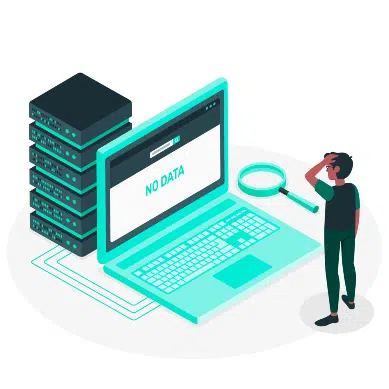Supply chains have never been more complex and intertwined. The result is a network of vendors and suppliers that can invite unforeseen risks to your business.
Third-party risk management (TPRM) has become a common practice for many organizations, but it’s time to expand the practice to include fourth parties. Fourth parties are your third-parties vendors, partners, or suppliers. You can think of it as a ‘friend of a friend.’
A recent Gartner study found that 60% of organizations now work with over 1,000 third parties. If each of those third parties has 1,000 of their own third parties, your fourth parties, the number of parties rapidly becomes astronomical. And with each new party comes new risks.
It’s no longer optional to consider 4th party vendor risk during your risk assessments and ongoing management. Yet, you can’t simply apply the same techniques as third-party risk management due to the potentially massive amount of companies to evaluate.
Read on to discover how you can start including 4th party risks in your risk management programs to protect your enterprise.

What is 4th Party Risk?
Let’s take a closer look at 4th parties to further understand the 4th party system and the risks it invites.
For example, think about any smartphone manufacturer. They’re unlikely to be mining and processing the raw materials they need or manufacturing every component within the device themselves. So instead, the manufacturer depends on vendors and suppliers to provide everything they need to put it all together into the final product that is given to you, the smartphone retailer, to sell to consumers.
In the past, the technological link between your and the manufacturer’s systems may have been limited to shipping and receiving information. Now, as you both wish to gain deeper insights into each other’s operations, you share more data and higher access levels. And your partner is doing the same thing with their vendors.
The result is a potential backdoor into your systems via 4th party companies. A vulnerability two companies away creates an opportunity for malicious actors to access your sensitive data and systems. The goal of 4th party risk management is to identify and prevent these risks.
Step-by-Step Guide to 4th Party Risk Management
When it comes to third party vs fourth party risk, you can’t apply the same approach to both. Yet, both parties invite added risks that must be understood and mitigated.
Third-party vendor security risk management is more straightforward to assess by sending cybersecurity questionnaires. (If you haven’t moved over to automated third-party security assessments, you need to consider this.) You can then evaluate the vendor’s answers, perform due diligence, identify risks, and implement mitigating controls.
However, you can’t typically send the same questionnaire to fourth-party organizations as you’re not a direct client. Instead, you need to modify how you interact with third-party vendors to then understand potential fourth-party risks.
Let’s explore actionable ways you can manage 4th party risks by improving how you work with vendors.
1. Identify All Fourth-Party Relationships
The process begins by fully understanding every fourth-party vendor in your supply chain. Next, you identify these relationships by updating your vendor questionnaires to request information about their vendors. The more information you’re able to obtain, the better.
Ideally, your vendors will be able to provide their own third-party risk assessments about your fourth parties. As a result, you’ll be equipped with everything you need to know about their compliance status, applications, and critical systems.
In addition, the SSAE 18 auditing standard (Statement on Standards for Attestation Engagements 18) requires third parties to report their vendors, so the information you need should be readily available.
2. Identify and Mitigate Fourth-Party Concentration Risks
Assessing a fourth party the same way as a third party rapidly becomes time-consuming and often won’t be possible.
Instead, identify concentration risks, assess them, and mitigate them as necessary. A concentration risk isolates critical areas of exposure created by fourth parties. Understanding how your systems interact with each other will help hone in on concentration risks, and then standard risk management practices can help assess and mitigate them.
Start Getting Value With
Centraleyes for Free
See for yourself how the Centraleyes platform exceeds anything an old GRC
system does and eliminates the need for manual processes and spreadsheets
to give you immediate value and run a full risk assessment in less than 30 days
3. Update Incident Response Plans as Needed
Once you understand the risks fourth parties invite, you’ll likely need to update your incident response plans to address them. Create new or updated plans that account for how you react should an incident occur via a fourth party.
You should also create monitoring and notification systems that alert you to fourth-party incidents before they impact your systems. If a fourth party is compromised, your plan should dictate how to isolate your networks and sensitive data.
4. Continually Monitor Fourth-Party Compliance
Are your fourth parties remaining compliant with applicable frameworks and regulations? The information provided by third parties will help you continually monitor fourth parties’ compliance status.
You can also update your agreements with third parties to provide a regularly updated report about their vendors’ compliance status. Should a fourth party incur fines or penalties related to compliance, you should be made aware, so you update mitigating controls or re-evaluate the relationship.
Leverage the Right Platform to Streamline 4th Party Risk Management
Some companies are still struggling with third-party risk management, but Centraleyes users are ready to include fourth-party risks as a vital element of their overall risk management program.
Fourth parties create an opportunity for malicious actors to penetrate your systems. Cybercriminals often work down the supply chain to find a way to access your valuable data — even if it’s by exploiting a vulnerability two or more companies away.
Partnering with Centraleyes helps streamline the 4th party risk management process by providing real-time data into both your third-party and fourth-party relationships. Ready to enhance your risk management program? Contact us today to speak to a vendor risk management expert and discover how Centraleyes can transform your risk management.
Start Getting Value With
Centraleyes for Free
See for yourself how the Centraleyes platform exceeds anything an old GRC
system does and eliminates the need for manual processes and spreadsheets
to give you immediate value and run a full risk assessment in less than 30 days





